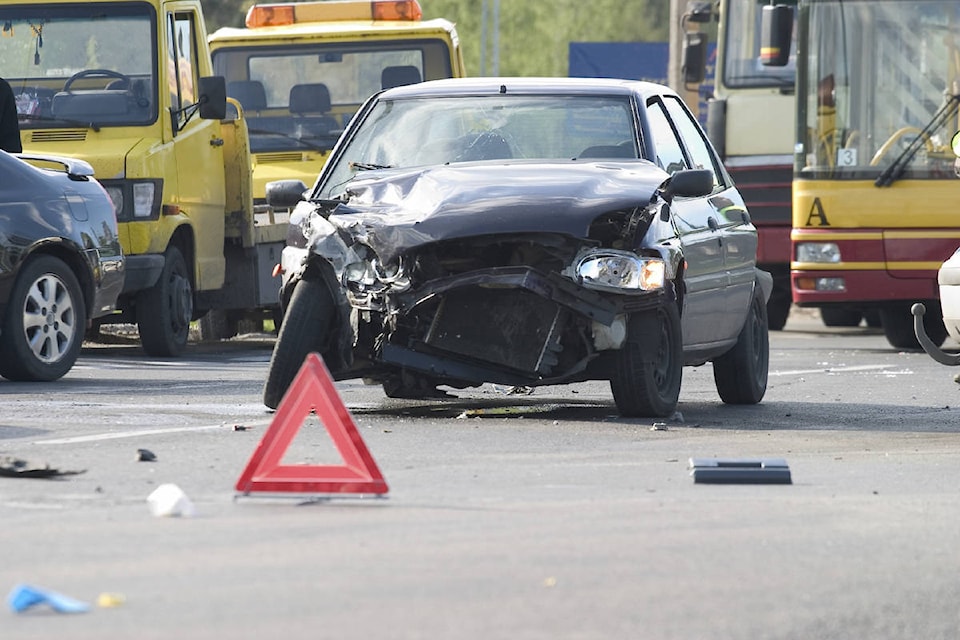I’ve written, before, that you should take photographs and get witness information at the scene of a crash (You’ve been in a crash… What now?).
But isn’t that obvious? Why would you need a legal columnist to give that advice?
In all the years I’ve been doing this work, though, not one of my clients has ever done it.
Why are these steps not taken?
It doesn’t occur to us that the other driver might not be perfectly forthright when reporting the crash to ICBC.
We give the benefit of the doubt. It would be an unpleasant world if we approached everyone with suspicion.
And taking steps to collect evidence at the scene feels impolite and uncomfortable as all heck.
By collecting evidence, you are screaming out: “I don’t trust you!!!”
Even asking to see their license and registration feels uncomfortable.
Start taking photographs with your cell phone and you’ll look like a total jerk.
Getting witness names and contact information is like putting up your boxing gloves.
No wonder it’s never done.
But it’s important.
What is obvious to you, at the scene, is never so obvious months or years after the fact. Memories fade. Stories change.
Sometimes police attend. Sometimes they don’t. If they do, you can count on them to do an excellent job of securing the scene and investigating for the purpose of law enforcement. But their job does not include preserving evidence so that you will be dealt with fairly in your personal injury claim.
So I’ll assume that little or nothing has been done to preserve evidence at the scene. What can be done after the fact?
1. Preserve your own memory
Your memory is just as likely to fade as anyone else’s. Preserve it. Tell your story of what occurred, with as much detail as possible, in a journal entry. Tell the story of what happened after impact as well, including details of discussions you had with the other driver and others.
2. Preserve the other driver’s story
Give the other driver a call. No phone number? Do a little sleuthing. Try Canada 411, Facebook, or use other resources.
What do you say? You’re simply wanting to ensure there’s no confusion about what occurred. Yes, it will be uncomfortable. Yes, they’ll be caught off guard.
Record the conversation. Don’t let them know it’s being recorded, though, because they’ll get nervous and clam up. That’s perfectly legal, by the way.
Just get them talking about the crash. Get their story nailed down.
Maybe they know about witnesses. Ask them.
3. Preserve the scene
Go back to the scene of the crash (or send a friend or family member) and take a bunch of photographs.
Maybe there is some physical evidence like skid marks.
Roads are regularly in a state of upgrade, repair and reconfiguration. If you don’t capture how the scene looked at the time of the crash, that evidence can forever be lost through road maintenance and construction.
4. Preserve the vehicle damage
Vehicle damage can be critical to proving what occurred. It can also be helpful to show the severity of impact.
ICBC repair shops are required to take photographs of damage to support their repair estimates and invoices. Take your own, though.
Some repair shops will let you keep the damaged components and some will not. Use a repair shop that will let you keep those components.
If your vehicle is “written off,” your photographs might be the only ones taken. Towing companies, for whatever reason, won’t let you take photographs of your own, destroyed vehicle at their premises. Take photographs anyway.
5. Witnesses
The stories told by independent witnesses are often seen to be the most reliable by the courts.
Their memories are likely to fade much faster than yours because they were passive observers and what occurred is not as important to them as it is to you.
Maybe a witness handed you their business card or jotted their name and number down on a piece of paper for you.
If not, you might have to do some sleuthing. Was a witness driving a vehicle with a company logo on it?
Any witnesses should be interviewed to preserve their recollection of what occurred. The interview should be recorded as well.
Does all this seem like overkill? For most crashes, it will be.
The “Who’s at fault” question is often not an issue.
Further, most people enjoy a complete recovery from crash injuries within a short period of time. Those claims are likely very small ones. The smaller the claim, the less these things matter.
We can’t predict how things will turn out, though. The exact, same injury can resolve completely in one person, while causing a lifetime of chronic pain in another.
I recommend taking these steps “just in case.” Need some guidance about what you might do in your, particular circumstances? Consult a personal injury lawyer who offers a free, initial consultation.
